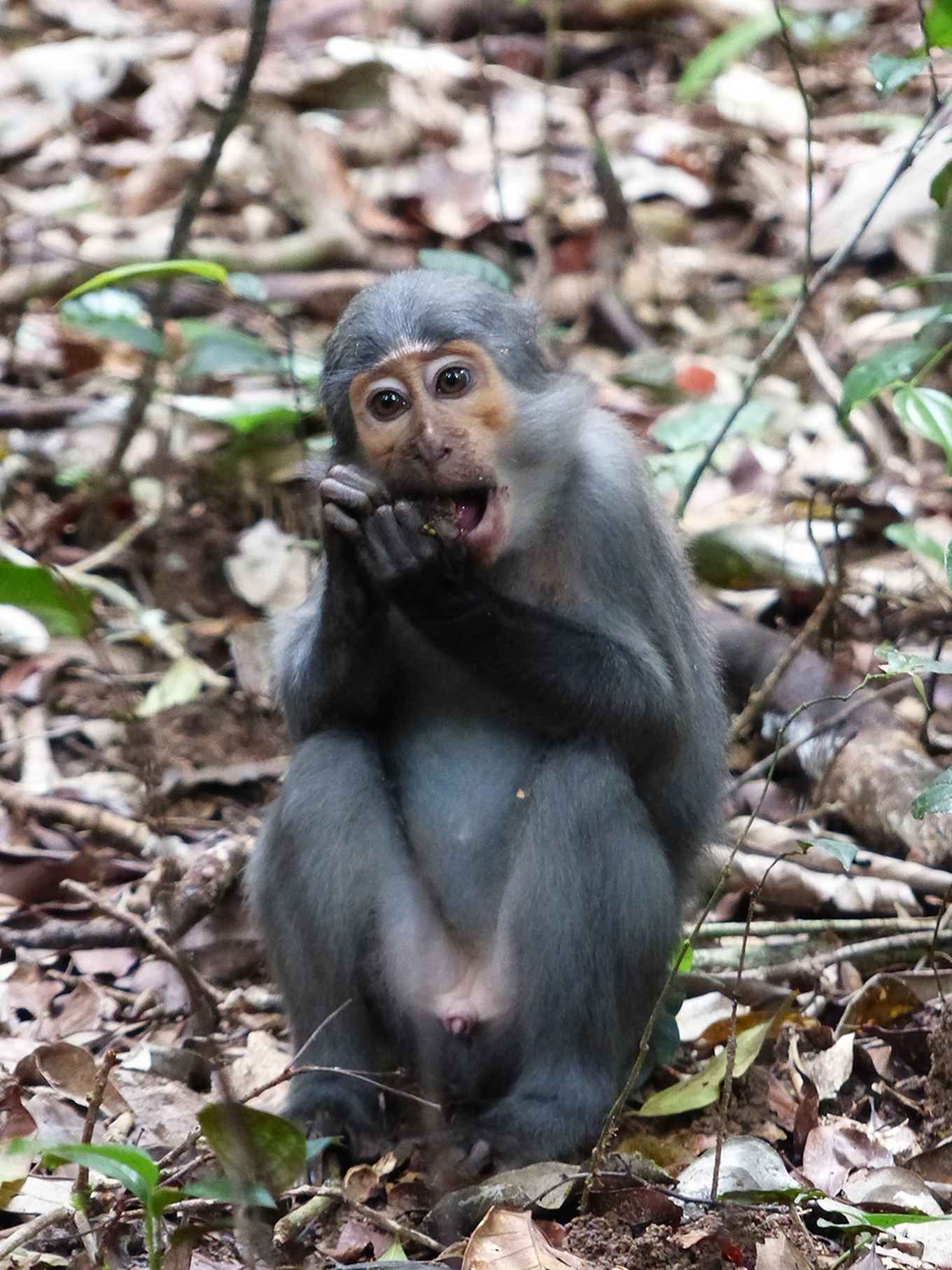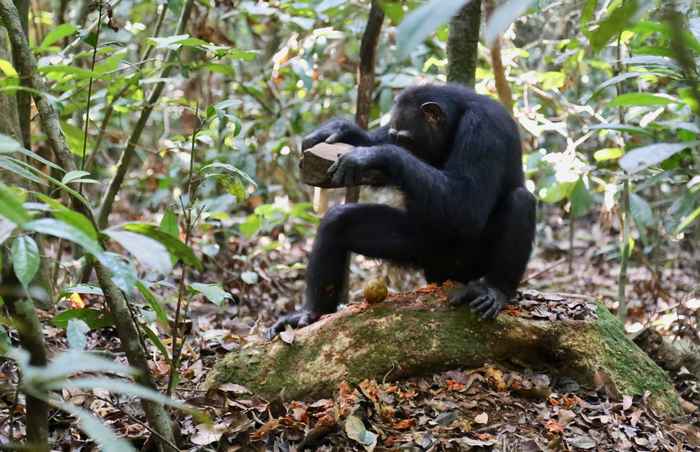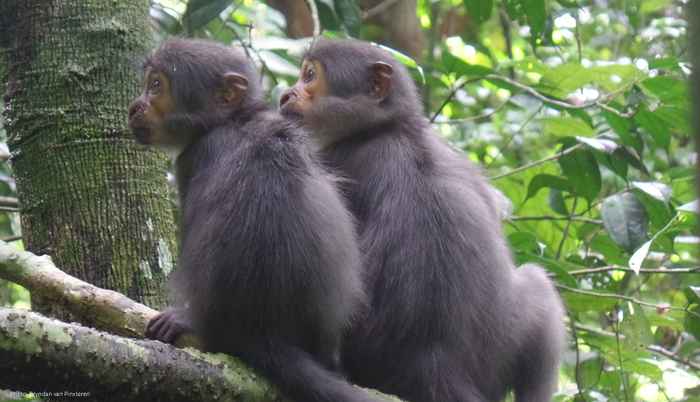Mangabey monkeys profit from nut-cracking skills of chimpanzees
Results could provide insight into origin of human decision-making skills
20 July 2018

Camera traps
As part of their study, the researchers collected a unique dataset by recording the monkeys’ behaviour with the help of several camera traps placed across Tai National Park rain forest in Ivory Coast. The footage was then analysed by scoring the visiting behaviour of mangabey monkeys to the nut-cracking sites of chimpanzees in relation to known nut-cracking events. Moreover, the researchers investigated whether mangabeys – who are infrequently preyed upon by chimpanzees – perceive an increase in predation risk when approaching nut remnants.

Scavenging mangabeys
The data analysis confirmed that mangabeys scavenge on the nuts cracked by chimpanzees and hogs and that this enables them to access food sources that would otherwise be inaccessible. For example, one of the fresh nut species (Panda oleosa) needs to be opened with the use of heavy stones by chimpanzees and cannot be opened with the mangabey’s teeth. The data also revealed that mangabeys are more frequently present at nut-cracking sites after chimpanzees and red river hogs have cracked nuts, suggesting that they are attracted to the nut-cracking events.
The researchers further discovered that mangabeys exhibit elevated levels of vigilance, which was measured by noting how often they scanned their distant surroundings at the chimpanzee nut-cracking sites compared to other foraging sites. Such heightened vigilance could indicate that mangabeys encounter a dilemma in weighing an opportunity to gain a high amount of ‘free’ energy against an increased predation risk.
‘After studying both mangabeys and chimpanzees for many months, I remain intrigued by the puzzling relationship between these two primate species’, says Karline Janmaat, a researcher at the UvA’s Institute for Biodiversity and Ecosystem Dynamics (IBED) and the Max Planck Institute of Evolutionary Anthropology and lead researcher of the study. ‘Sometimes the monkeys seem to be scared of these potential yet infrequent predators, while at other times they approach chimpanzees within metres to profit from their tool-using skills, almost as if they have learned to anticipate the other species’ “mood”.’

Origin of human decision-making behaviour
‘The decisions of mangabeys to approach the leftovers of potential predators may imply contextual knowledge that helps them judge whether they are safe, need to be vigilant or move into a safe position’, says Janmaat. ‘This same type of decision-making behaviour could also have been expected in our early human ancestors, who might have obtained free and otherwise hard-to-acquire food from dangerous predators by scavenging on their leftover prey carrion. Therefore, studying the monkeys’ behaviour could provide insight into the origin of our own decision-making skills.’
‘This makes it all the sadder that the forest in which we observed the monkeys’ intriguing behaviour are disappearing at an alarming rate’, adds Bryndan van Pinxteren, lead author of the study. ‘We are not only losing these forests, but also our evolutionary history, since all our closest living relatives live there.’
Publication details
Bryndan O.C.M. van Pinxteren, Giulia Sirianni, Paolo Gratton, Marie-Lyne Després-Einspenner, Martijn Egas, Hjalmar Kühl, Juan Lapuente, Amelia C. Meier, Karline R.L. Janmaat. ‘Sooty mangabeys scavenge on nuts cracked by chimpanzees and red river hogs — An investigation of inter-specific interactions around tropical nut trees’ in: American Journal of Primatology .(19 July 2018). DOI: 10.1002/ajp.22895.